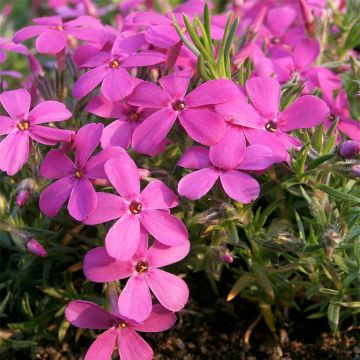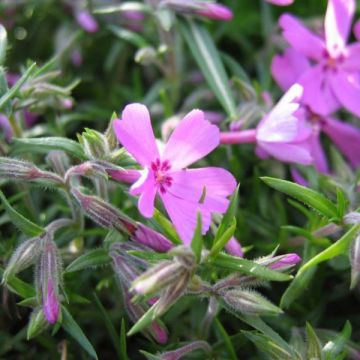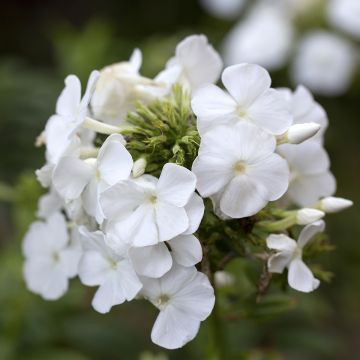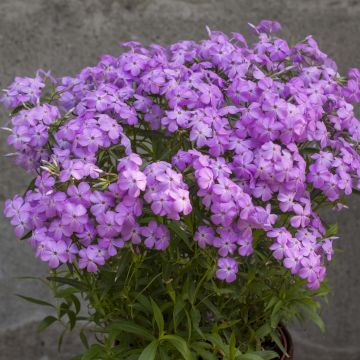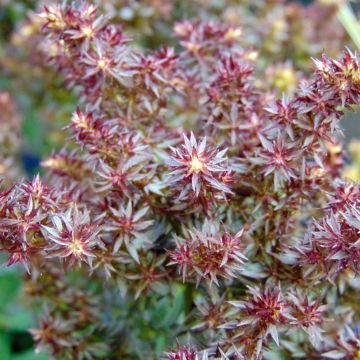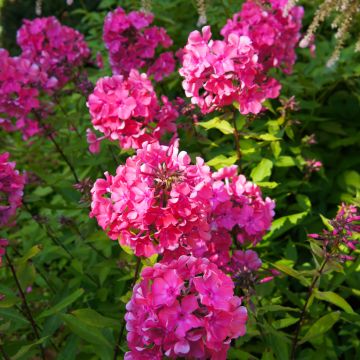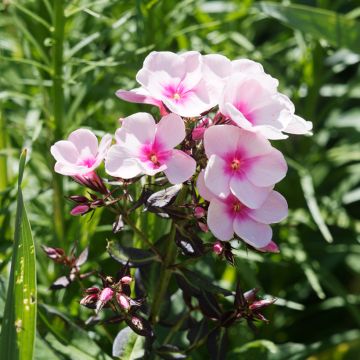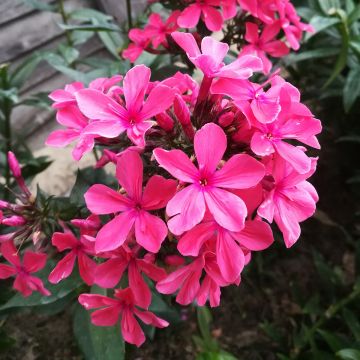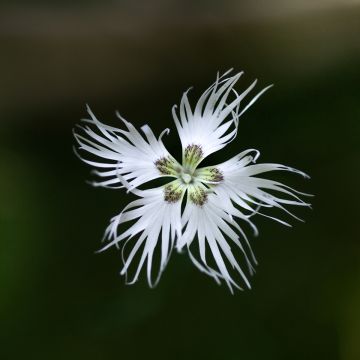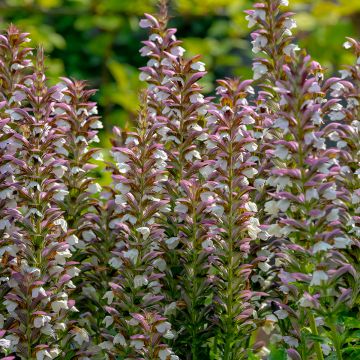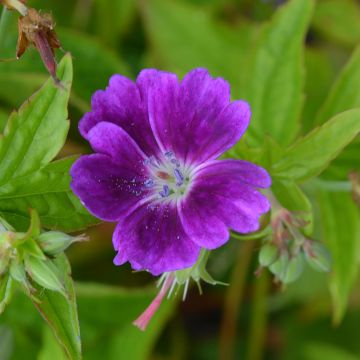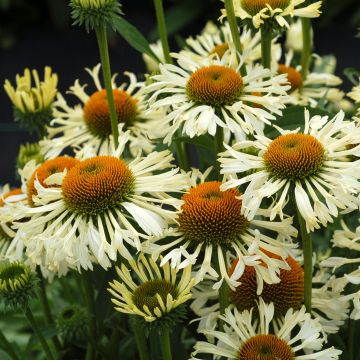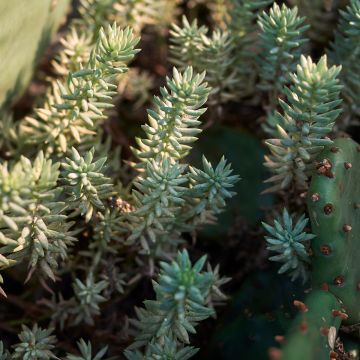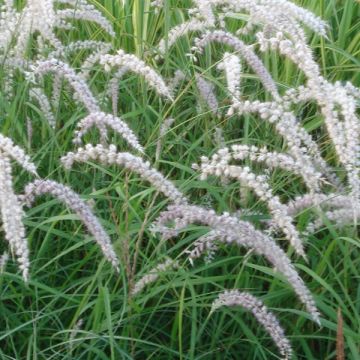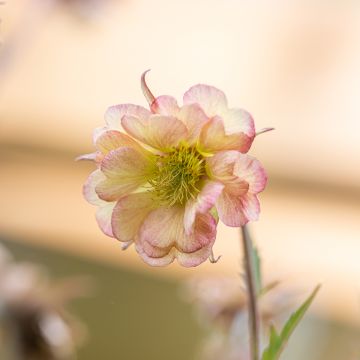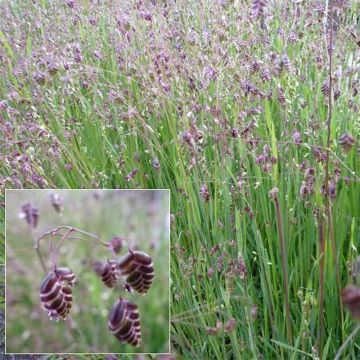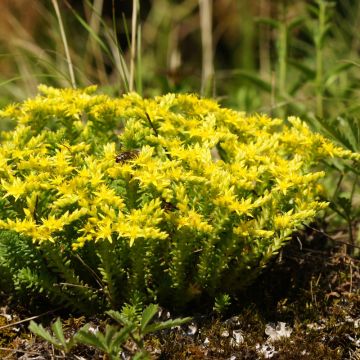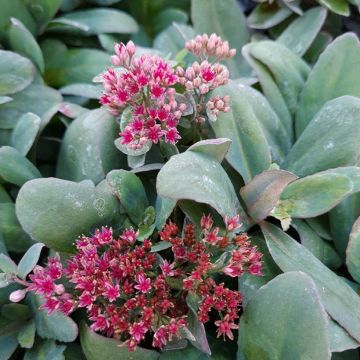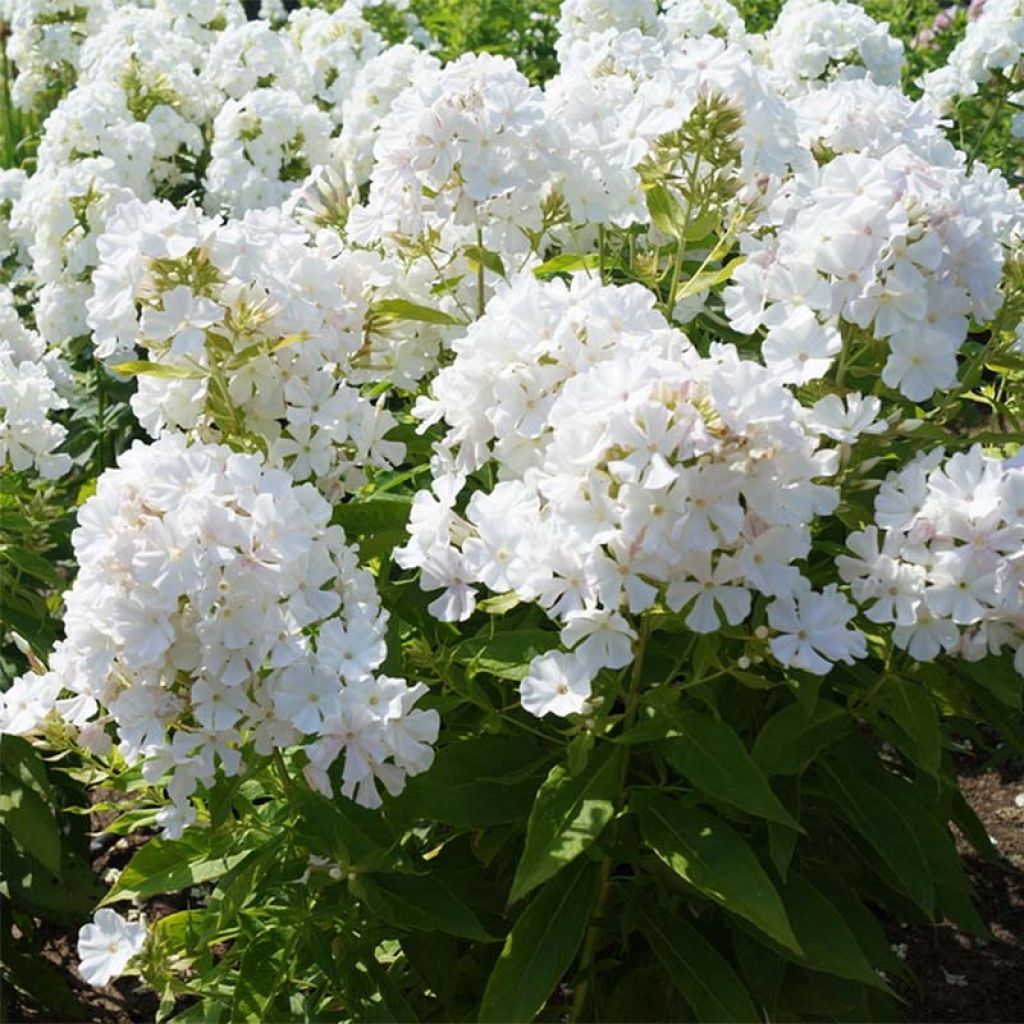

Phlox paniculata Flame White Imp. - Phlox paniculé
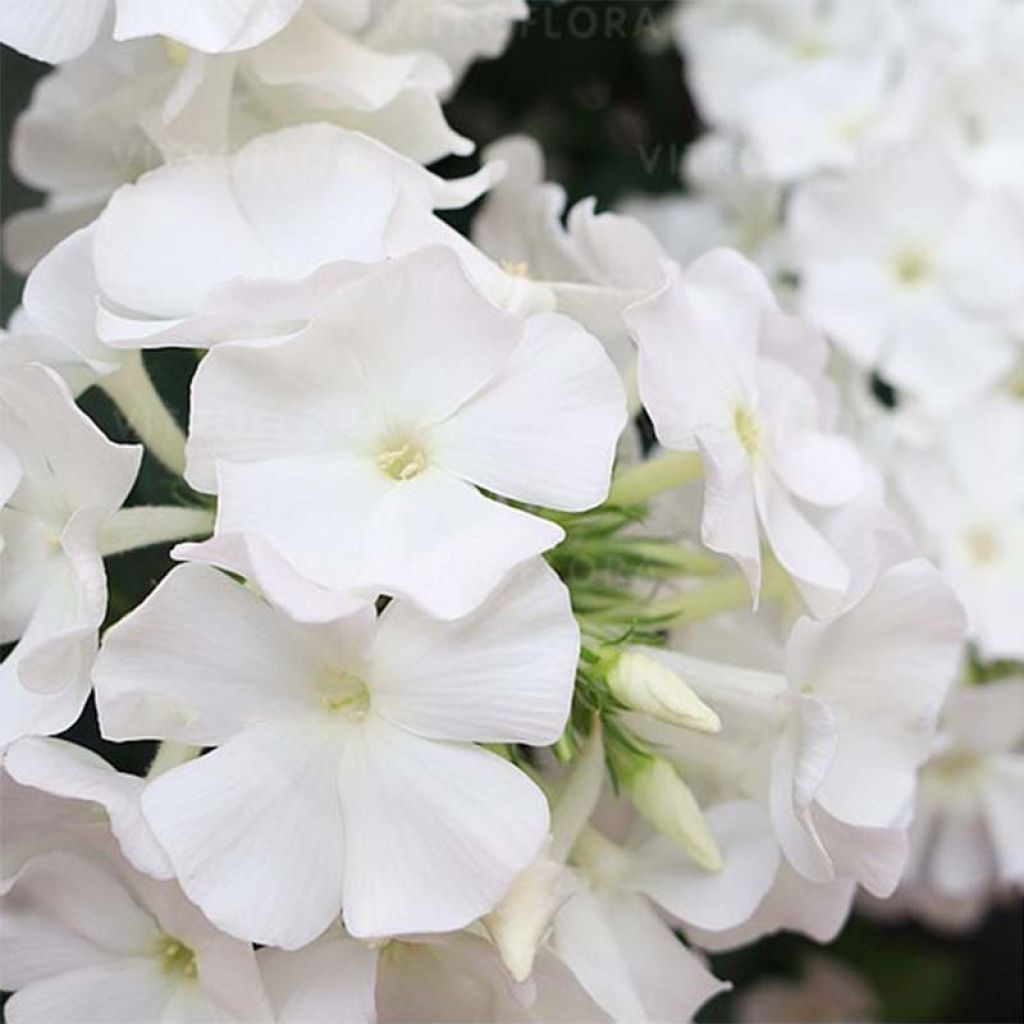

Phlox paniculata Flame White Imp. - Phlox paniculé
Phlox paniculata Flame White
Phlox paniculata Flame White Imp.
Garden Phlox, Summer Phlox, Perennial Phlox
This item cannot be shipped to the selected country
Delivery charge from €5.90
More information
Schedule delivery date,
and select date in basket
This plant carries a 12 months recovery warranty
More information
We guarantee the quality of our plants for a full growing cycle, and will replace at our expense any plant that fails to recover under normal climatic and planting conditions.
From €5.90 for pickup delivery and €6.90 for home delivery
Express home delivery from €8.90.
Does this plant fit my garden?
Set up your Plantfit profile →
Description
Phlox paniculata Flame White Imp. is a beautiful variety with a compact habit forming a clump of lanceolate leaves. During the summer, the plant produces dense inflorescences of fragrant flowers with five white petals. It thrives in sunny borders and will be satisfied with any rich and light garden soil, which is damp and well-drained. It will also do very well in pots.
Phlox paniculata Flame White belongs to the family of Polemoniaceae, which takes its name from other well-known ornamentals in our gardens: Polemoniums. Phlox paniculata is a robust perennial native to the eastern United States, where it can be found in open woodlands, woodland edges or in shrbby areas along watercourses. The plant forms a clump of lanceolate leaves about 10 centimeters long. It produces stiff stems, between July and September with numerous paniculate clusters of helically arranged, often fragrant flowers. Removing faded flowers as they appear will extend the flowering period over several weeks. While appreciated by butterflies in Europe, it is primarily hummingbirds that visit phlox in its native regions.
Phlox paniculata Flame White is a pretty compact selection from the Flame series, which will not exceed 45 cm (18in) in height and about 40 cm (16in) in diameter. Its flowers, very delicate, are subtly scented and have 5 large pure white petals. It is also a variety resistant to powdery mildew, which manifests as grey spots on the leaves in dry conditions.
Resistant, Phlox paniculata Flame White, will decorate gardens with its simplicity and abundant flowers. It is ideal for wild-rustic borders as well as cottage gardens. It will be content with any good garden soil in the sun, which is not too acidic or too chalky, does not dry out too much in summer, but above all is well-drained. In heavy soils, its longevity may be affected. Slugs can sometimes devour young leaves in spring. The small size of Flame White also allows it to be used in pots, to enhance your balcony or patio; it will then require a little more water.
You can associate it with other phlox, with perennials such as Geranium pratense 'Cluden Sapphire', meadow sage, or even Penstemon 'Husker Red'. It is also an excellent companion for shrubs such as Hydrangea paniculata 'Bobo' and its large white inflorescences.
Report an error about the product description
Phlox paniculata Flame White in pictures
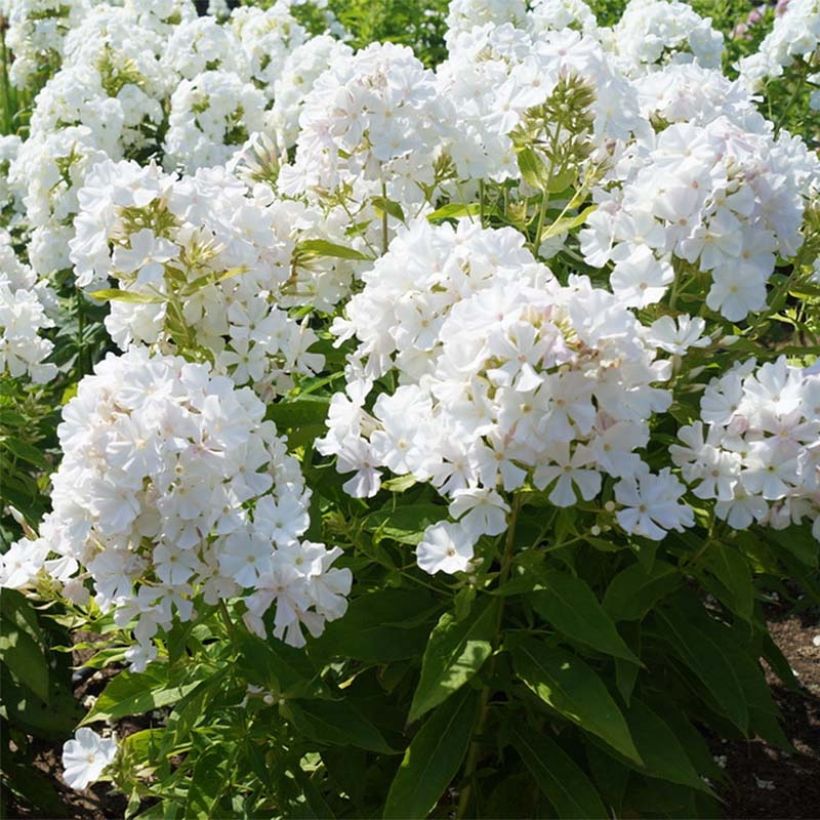

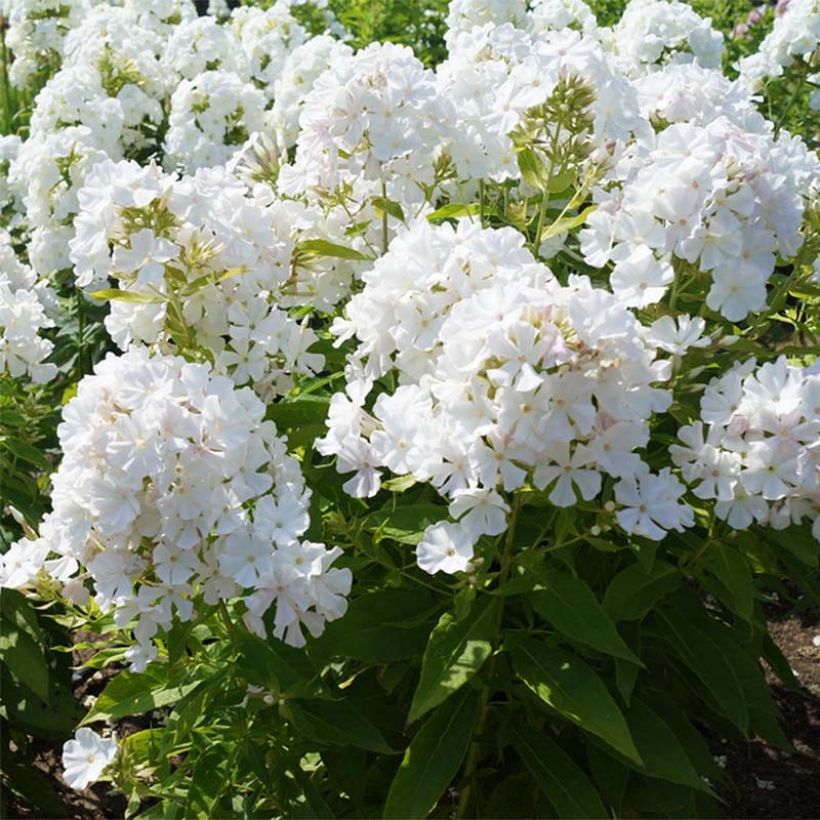

Flowering
Foliage
Plant habit
Botanical data
Phlox
paniculata
Flame White Imp.
Polemoniaceae
Garden Phlox, Summer Phlox, Perennial Phlox
Cultivar or hybrid
Other Phlox
Planting and care
Phlox paniculata are easy to grow plants. Phlox paniculata Windsor prefers a moist and rich soil, even clay soils. It needs sun to flower well. An environment that is too dry or too hot makes the foliage susceptible to powdery mildew. Planted in the sun in a climate with hot summers, it requires regular watering and mulching at the base. Pruning faded flowers promotes a second flowering at the end of the season. Protect young plants from slugs, which are fond of their tender shoots.
Planting period
Intended location
Care
This item has not been reviewed yet - be the first to leave a review about it.
Summer flowering perennials
Haven't found what you were looking for?
Hardiness is the lowest winter temperature a plant can endure without suffering serious damage or even dying. However, hardiness is affected by location (a sheltered area, such as a patio), protection (winter cover) and soil type (hardiness is improved by well-drained soil).

Photo Sharing Terms & Conditions
In order to encourage gardeners to interact and share their experiences, Promesse de fleurs offers various media enabling content to be uploaded onto its Site - in particular via the ‘Photo sharing’ module.
The User agrees to refrain from:
- Posting any content that is illegal, prejudicial, insulting, racist, inciteful to hatred, revisionist, contrary to public decency, that infringes on privacy or on the privacy rights of third parties, in particular the publicity rights of persons and goods, intellectual property rights, or the right to privacy.
- Submitting content on behalf of a third party;
- Impersonate the identity of a third party and/or publish any personal information about a third party;
In general, the User undertakes to refrain from any unethical behaviour.
All Content (in particular text, comments, files, images, photos, videos, creative works, etc.), which may be subject to property or intellectual property rights, image or other private rights, shall remain the property of the User, subject to the limited rights granted by the terms of the licence granted by Promesse de fleurs as stated below. Users are at liberty to publish or not to publish such Content on the Site, notably via the ‘Photo Sharing’ facility, and accept that this Content shall be made public and freely accessible, notably on the Internet.
Users further acknowledge, undertake to have ,and guarantee that they hold all necessary rights and permissions to publish such material on the Site, in particular with regard to the legislation in force pertaining to any privacy, property, intellectual property, image, or contractual rights, or rights of any other nature. By publishing such Content on the Site, Users acknowledge accepting full liability as publishers of the Content within the meaning of the law, and grant Promesse de fleurs, free of charge, an inclusive, worldwide licence for the said Content for the entire duration of its publication, including all reproduction, representation, up/downloading, displaying, performing, transmission, and storage rights.
Users also grant permission for their name to be linked to the Content and accept that this link may not always be made available.
By engaging in posting material, Users consent to their Content becoming automatically accessible on the Internet, in particular on other sites and/or blogs and/or web pages of the Promesse de fleurs site, including in particular social pages and the Promesse de fleurs catalogue.
Users may secure the removal of entrusted content free of charge by issuing a simple request via our contact form.
The flowering period indicated on our website applies to countries and regions located in USDA zone 8 (France, the United Kingdom, Ireland, the Netherlands, etc.)
It will vary according to where you live:
- In zones 9 to 10 (Italy, Spain, Greece, etc.), flowering will occur about 2 to 4 weeks earlier.
- In zones 6 to 7 (Germany, Poland, Slovenia, and lower mountainous regions), flowering will be delayed by 2 to 3 weeks.
- In zone 5 (Central Europe, Scandinavia), blooming will be delayed by 3 to 5 weeks.
In temperate climates, pruning of spring-flowering shrubs (forsythia, spireas, etc.) should be done just after flowering.
Pruning of summer-flowering shrubs (Indian Lilac, Perovskia, etc.) can be done in winter or spring.
In cold regions as well as with frost-sensitive plants, avoid pruning too early when severe frosts may still occur.
The planting period indicated on our website applies to countries and regions located in USDA zone 8 (France, United Kingdom, Ireland, Netherlands).
It will vary according to where you live:
- In Mediterranean zones (Marseille, Madrid, Milan, etc.), autumn and winter are the best planting periods.
- In continental zones (Strasbourg, Munich, Vienna, etc.), delay planting by 2 to 3 weeks in spring and bring it forward by 2 to 4 weeks in autumn.
- In mountainous regions (the Alps, Pyrenees, Carpathians, etc.), it is best to plant in late spring (May-June) or late summer (August-September).
The harvesting period indicated on our website applies to countries and regions in USDA zone 8 (France, England, Ireland, the Netherlands).
In colder areas (Scandinavia, Poland, Austria...) fruit and vegetable harvests are likely to be delayed by 3-4 weeks.
In warmer areas (Italy, Spain, Greece, etc.), harvesting will probably take place earlier, depending on weather conditions.
The sowing periods indicated on our website apply to countries and regions within USDA Zone 8 (France, UK, Ireland, Netherlands).
In colder areas (Scandinavia, Poland, Austria...), delay any outdoor sowing by 3-4 weeks, or sow under glass.
In warmer climes (Italy, Spain, Greece, etc.), bring outdoor sowing forward by a few weeks.

































